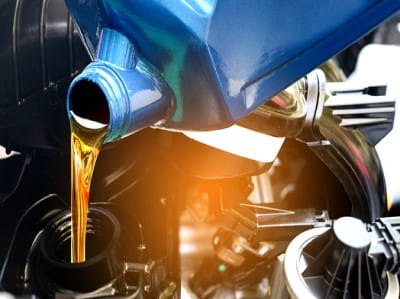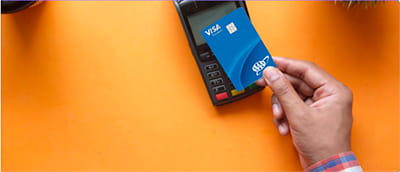John Townsend
Public Relations Manager, DC
O: (202) 481-6820 (ext. 4462108)
C: (202) 253-2171
jtownsend@aaamidatlantic.com
WASHINGTON, D. C. (Tuesday, December 11, 2018) ––Clouded or yellowed headlights generate only 20 percent of the amount of light that new headlights do, leading to dangerous nighttime driving conditions, new research from AAA reveals. This decrease in luminosity is caused by sunlight damage to protective plastic coatings, resulting in discoloration that considerably diminishes the headlight’s ability to provide adequate light on dark roadways. With 50 percent of crashes occurring at night, AAA urges drivers to check their headlights for signs of deterioration and invest in new headlights or, at a minimum, a low-cost service to boost the safety of driving after dark.
There are now about 4.1 million registered vehicles in the Washington metro region. For safety’s sake, it is important for drivers to check their headlights, as they would their battery, tires or oil, to see if any deterioration has occurred. Instead drivers are being left in the dark, putting pedestrians, people walking in and around moving vehicles, cyclists and other motorists at risk. Better headlights will improve pedestrian safety.
“Walk through any parking lot and it is evident that deteriorated headlights are a problem for most vehicle owners,” said Greg Brannon, AAA’s director of Automotive Engineering and Industry Relations. “Headlights on the road in the U.S., even when new, don’t produce a sufficient amount of lighting, so any reduction in performance is a real safety issue.”
AAA examined the impact deterioration can have on the amount of light produced by conducting research using an accredited laboratory to test headlights from two popular sedans, approximately 11 years in age. Results from the degraded headlights were measured against new headlights to quantify the amount of light produced for each. All testing was done in accordance with the Federal Motor Vehicle Safety Standard 108 as set forth by the Department of Transportation (DOT).
Research revealed that deteriorated headlights, when used on low beam, provided just 22 percent of the amount of light a new headlight does when operating at full capacity. AAA also examined the effects that replacing or restoring a headlight can have on improving the amount of light produced. Replacing headlights with original equipment manufacturer parts is the most effective method to restore light output back to 100 percent.
“Sunlight causes the plastic lens to deteriorate, giving it a clouded or yellowed appearance. Once this happens, the light from the bulb inside has difficulty shining through. It’s the same as pulling a shade down on a window, some light will come through but it will be greatly reduced,” explained James Moore, Manager, AAA Mid-Atlantic Car Care Center in Fairfax. “While replacing a headlight yourself is possible, it can be time consuming and requires that the headlight be properly aimed after installation. This does require special equipment, which most people do not own. A job like this might be better left to a professional auto repair shop.”
“It’s difficult to say exactly how many vehicles have deteriorated headlights. But with the average age of 11.6 years for cars on the road today, compared to average vehicle age of 9.17 years across the Washington metro area, it is likely that many, particularly those in the Sunbelt, are affected by this issue,” said John B. Townsend II, AAA Mid-Atlantic’s Manager of Public and Government Affairs. “At the end of the day, this is a highway safety issue. Any yellowing or clouding will diminish the amount of light output and make driving on unlit roads at night difficult and worse, dangerous. Due to the type of plastic used, halogen reflector headlights typically start degrading at three to five years depending on the amount of sunlight exposure.”
Aftermarket parts also performed well, restoring light output between 83 and 90 percent, however these did fail to meet certain requirements for light intensity and were found to be more likely to produce glare for oncoming traffic. Restoring headlights, while the most cost effective option, offered less of an improvement in light output than replacement. Professional and DIY restoration returned light output back to approximately 70 percent. Both restoration methods, however, produced more glare than is acceptable according DOT criteria.
Compounding the problem of driving with deteriorated headlights is the fact that U.S. headlights have significant shortcomings. Previous AAA research found that halogen headlights fail to safely illuminate unlit roadways at speeds as low as 40 mph, with high beam settings offering only marginal improvements. Even the most advanced headlights tested illuminated just 40 percent of the sight distances that the full light of day provides. By not maintaining headlights, drivers are unknowingly operating in dangerously dim conditions.
“Driving at night with headlights that produce only 20 percent of the light they did when new, which is already subpar, is a risk drivers shouldn’t take,” continued Brannon. “Especially when there are convenient and inexpensive solutions that can dramatically improve lighting performance.”
In addition, a new study found that “almost half of 2018 model cars don’t do a good enough job lighting the road at night and limiting glare for oncoming drivers,” reports the Insurance Institute for Highway Safety (IIHS). Most headlights are made of plastic and exposure to sunlight breaks down the plastic coating, causing discoloration that obscures the amount of light produced, notes AAA. Depending on where and how the vehicle is used, headlights can begin showing signs of deterioration as early as three years to five years.
Unlike batteries or tires, most drivers are not in the habit of routinely inspecting their headlights. AAA suggests drivers check their headlights for changes in appearance such as yellowing or clouding and if the bulb is difficult to see, it is time to have the lenses replaced or restored as soon as possible. AAA recommends replacement since this method offers the most improvement in the amount of light produced. AAA recommends replacement since this method offers the most improvement in the amount of light produced. Both replacement and restoration services are provided by AAA Mid-Atlantic’s Car Care Centers, as well as at many repair shops including numerous AAA Approved Auto Repair facilities.
Methodology
Headlight assemblies used in testing were for the left (driver’s) side of the vehicle. To quantify headlight performance, AAA contracted an accredited testing laboratory with expertise in automotive headlights and conducted testing according to industry standards. Headlights were tested according to FMVSS-108 standards with no modifications to the headlight assemblies under test or to the test procedures.
The professional headlight restoration systems used a power sanding technique to remove the original protective film from the headlight lens. The resulting scratched surface of the polycarbonate was then polished using increasingly finer grades of sanding discs and a protectant film applied to the entire surface of the headlight lens. Full methodology available in the research report found here.
Follow us on Twitter: @AAADCNews
Like us on Facebook: AAA Mid-Atlantic News
Washington, D.C. Mailing Address:
1405 G Street NW
Washington, DC 20005
AAA provides automotive, travel and insurance services to 59 million members nationwide and nearly 79,000 members in the District of Columbia. AAA advocates for the safety and mobility of its members and has been committed to outstanding road service for more than 100 years. The not-for-profit, fully tax-paying member organization works on behalf of motorists, who can now map a route, find local gas prices, discover discounts, book a hotel and track their roadside assistance service with the AAA Mobile app for iPhone, iPad and Android. For more information, visit https://aaa.com
Ragina C. Ali
Public Relations Manager, MD
O: (410) 616-1900 (ext. 4361152)
C: (443) 465-5020
RAli@aaamidatlantic.com







